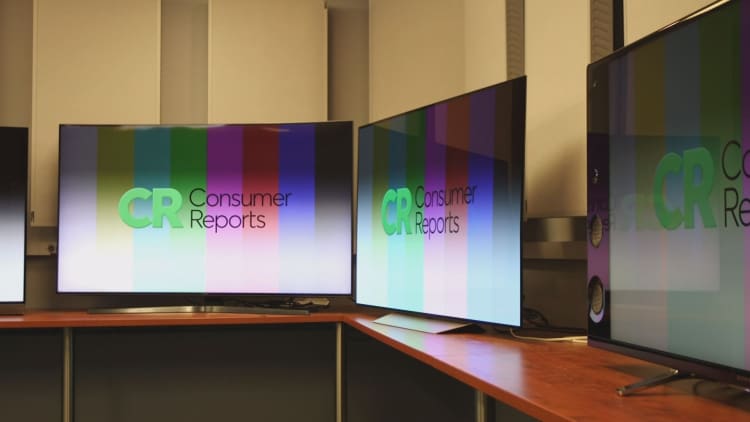
A few years ago, curved televisions were all the rage. Then 4K became the talk of the town. This year, it’s high-dynamic range (HDR) TVs at a price point buyers can finally afford. To the average consumer, all these changes are hard to keep up with.
Enter Consumer Reports, the Yonkers, New York-based nonprofit testing organization that reviews everything from cars to vacuums to blenders. Each year, it tests more than 200 televisions in addition to the thousands of others products and services it reviews.
Here's how it determines which TVs are the best:
First, Consumer Reports uses secret shoppers to buy all of its televisions at retail price. (It does this for every product it reviews.)
“The reason they’re called secret shoppers is because we really don’t want manufacturers to know that we work for Consumer Reports. We don’t want to have a sample that’s souped-up given to us to test,” said Jon Malatino, senior technician at Consumer Reports.
By never accepting samples from manufacturers, Consumer Reports ensures the products it reviews are the same ones everyday buyers are purchasing and putting in their homes.
The testers are looking at two major types of TV technologies: LCD and OLED.
“We evaluate the black levels of the TVs, the color, sound, HDR and 4K performance. Once all those individual tests are done, we move [the TVs] to another lab and do a full viewing evaluation,” said Matt Ferretti, assistant test project leader at Consumer Reports.
Black level test
“In a bright room, like a showroom floor where you’re buying a TV, all the fluorescent lights are on and the TVs are set up very bright so they all look pretty good. When the lights turn off, you can really see the difference in the TVs,” said Ferretti.
As a general rule, the darker the black level, the better contrast a TV has. LCD TVs, which have LED backlights, tend to perform worse than OLED TVs. As a positive, they tend to be brighter and less expensive.
Viewing angle test
Another test, the viewing angle, evaluates how TV images hold up when viewed from the side of the room. Sets with narrow viewing angles might only look good straight on. Buyers can perform this test themselves when they’re purchasing a TV. If the TV image distorts, changes color and/or brightens when seen from the side, it has a poor viewing angle.
Motion performance test
The motion performance test, created in-house by Consumer Reports, evaluates how blurry text becomes when it moves across the screen.
Consumer Reports has more than 6 million members who read its print magazine and website. That’s down from the 8.4 million subscribers it had in 2014. The group faces stiffer competition in the testing and reviewing space, as anonymous reviews gain popularity and sites like The Wirecutter, owned by The New York Times, attract a younger audience.
Marta Tellado, Consumer Reports' CEO, says what sets the 82-year-old non-profit apart is its impartiality.
“While a lot of folks are out there reviewing and rating, we are independent, we are only beholden to consumers. We don’t rate folks based on any kind of deal that we have with that particular company,” she said.


